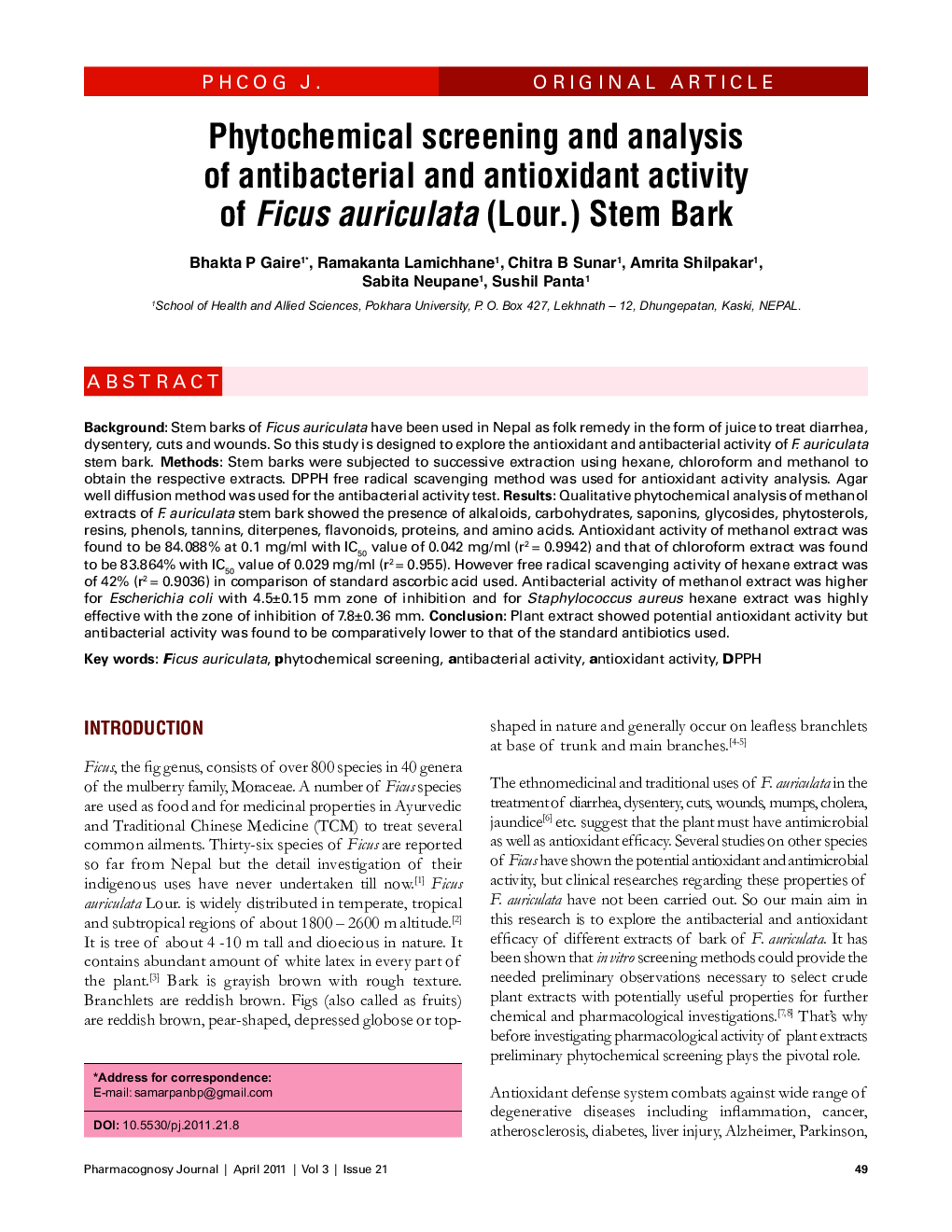| Article ID | Journal | Published Year | Pages | File Type |
|---|---|---|---|---|
| 2495949 | Pharmacognosy Journal | 2011 | 7 Pages |
Abstract
Background: Stem barks of Ficus auriculata have been used in Nepal as folk remedy in the form of juice to treat diarrhea, dysentery, cuts and wounds. So this study is designed to explore the antioxidant and antibacterial activity of F. auriculata stem bark. Methods: Stem barks were subjected to successive extraction using hexane, chloroform and methanol to obtain the respective extracts. DPPH free radical scavenging method was used for antioxidant activity analysis. Agar well diffusion method was used for the antibacterial activity test. Results: Qualitative phytochemical analysis of methanol extracts of F. auriculata stem bark showed the presence of alkaloids, carbohydrates, saponins, glycosides, phytosterols, resins, phenols, tannins, diterpenes, flavonoids, proteins, and amino acids. Antioxidant activity of methanol extract was found to be 84.088% at 0.1 mg/ml with IC50 value of 0.042 mg/ml (r2 = 0.9942) and that of chloroform extract was found to be 83.864% with IC50 value of 0.029 mg/ml (r2 = 0.955). However free radical scavenging activity of hexane extract was of 42% (r2 = 0.9036) in comparison of standard ascorbic acid used. Antibacterial activity of methanol extract was higher for Escherichia coli with 4.5±0.15 mm zone of inhibition and for Staphylococcus aureus hexane extract was highly effective with the zone of inhibition of 7.8±0.36 mm. Conclusion: Plant extract showed potential antioxidant activity but antibacterial activity was found to be comparatively lower to that of the standard antibiotics used.
Related Topics
Life Sciences
Biochemistry, Genetics and Molecular Biology
Molecular Medicine
Authors
Bhakta P Gaire, Ramakanta Lamichhane, Chitra B Sunar, Amrita Shilpakar, Sabita Neupane, Sushil Panta,
